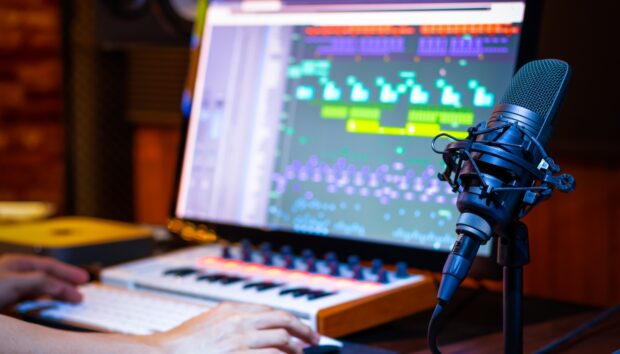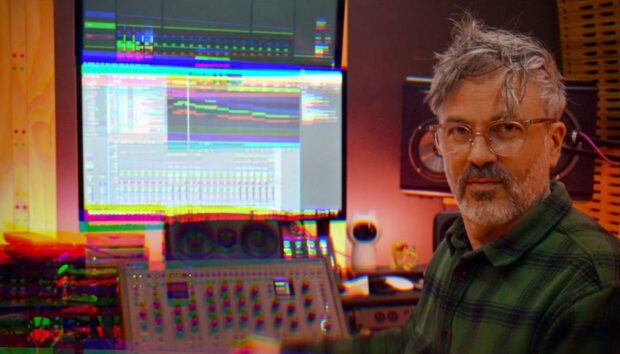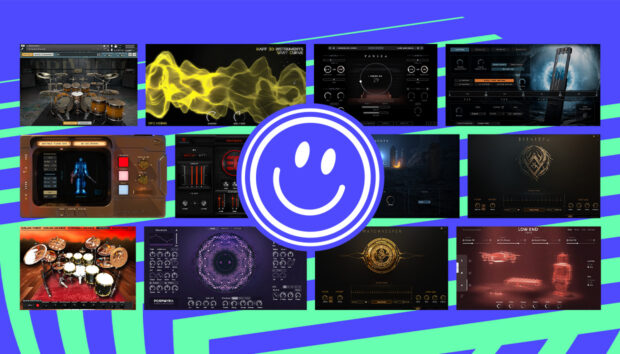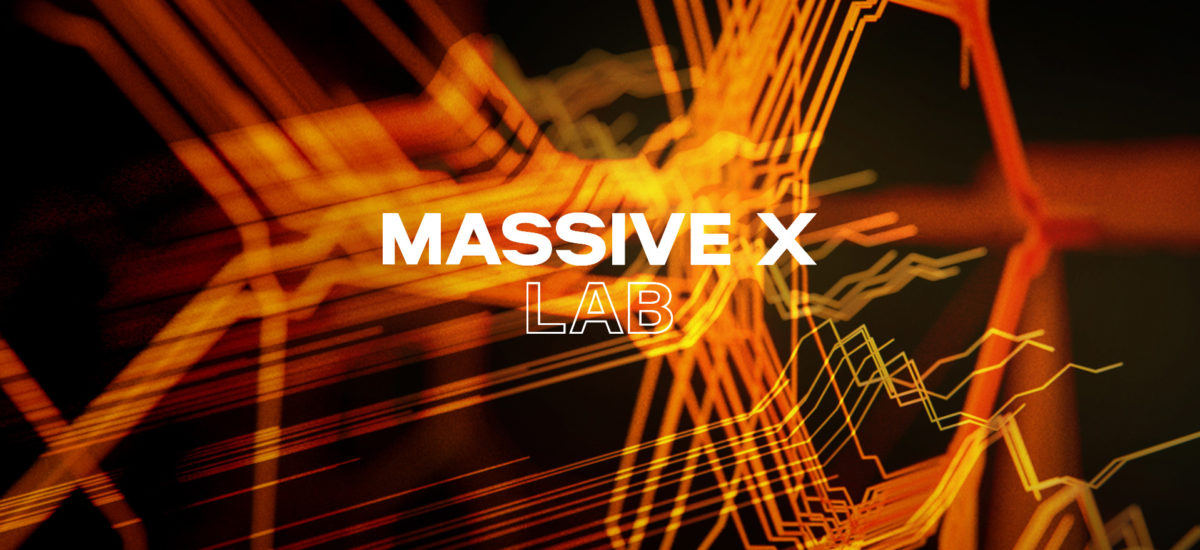
In the end, a synth is more than just a list of specifications. It’s that search for sounds you want, and best of all, the sounds you haven’t heard before. In the latest installment of the MASSIVE X Lab series, we talk to the expert sound designers pushing this new instrument to its limit, to tell us about the noises they’re making – and how deep this rabbit hole goes.
Speaking to sound designers Torsten Fassbender, Alex Cummings (ARC Noise), Carlo De Gregorio, John Valasis, and Richard Devine, we find out more behind this year’s most anticipated release.
Scroll to the end of the article to hear the entire range of MASSIVE X audio demos.
The MASSIVE X Sound
First, what does it sound like, especially to the ears of sound designers who have their choice of loads of gear and plug-ins?
ARC: The sound is great! To my ears it sounds like a hybrid modular kit, clearly digital but with an organic and rich sound you don’t normally get with soft synths. There’s a huge sweet spot with all of it, too, which makes programming patches really fun. It feels like there are so many different places you can take a sound.
Torsten: This synth can sound like a beautiful, cold, digital FM-ish synth, or like pure, warm analog poly.
John: Given that Massive is a legendary instrument, you can easily imagine how special Massive X can be. I’d say it’s more like a new platform for modern sound design, rather than a typical instrument. A tool, capable of producing extremely wide-ranging types of sounds – from smooth, warm pads and evolving soundscapes to heavy bass or lead synths, and even groove patterns or melodic lines.
Carlo: It definitely raises the bar yet again in terms of sound quality – the years of development comes across when you listen. Everything from the new wavetables and the new oscillator modes to the filters and effects sound extremely high quality.
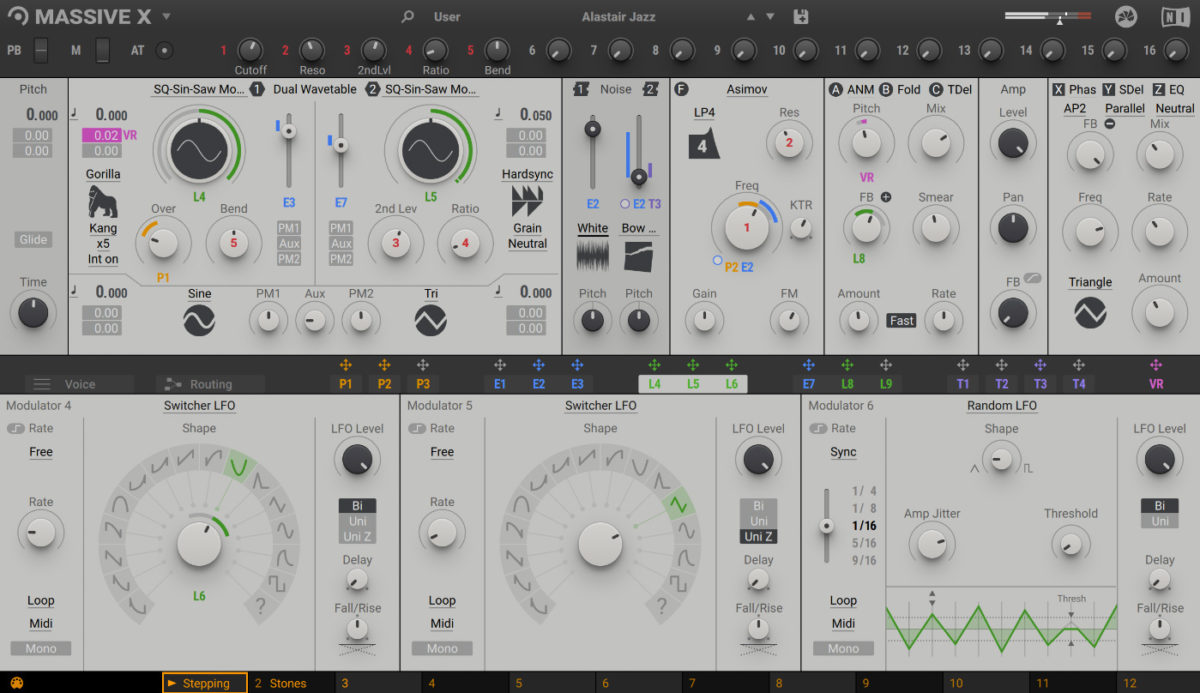
What to expect from the sound library
For the Massive X preset design, Native’s in-house sound designers joined forces with a team of sound design all-stars, including Richard Devine. The brief was simple: Create things you’ve never heard before. So we asked them, what’s in the library?
Carlo: We’ve been afforded lots of room to explore the synth and make the kinds of sounds we like ourselves. I’ve been exploring down-tempo music for a while, so I decided to make poly-instruments first, like plucks and keys.
ARC: I’ve been making a pretty broad selection of sounds, but a lot of chunky sub bass patches and lots of polyphonic key presets, too.
John: I always try to make use of every available feature in order to create expressive and playable presets. That’s my biggest goal – to maintain the musicality through the presets, even the most heavily-processed ones. For my presets, I’ve made extensive use of the Performer feature in order to bring some interesting grooves and melodic lines out. Additionally, I’ve created several evolving soundscapes and SFX – some of them could play endlessly without repeating themselves. That’s possible thanks to the huge amount of modulators and the connectivity possibilities.
Torsten: I chose to make what I’d consider ‘bread and butter’ sounds, to show that MASSIVE X is also capable of doing those. I tried to make them fresh, of course, by adding crazy macro routings, so you drift easily from a straight, usable sound to something crazy, which could be handy in certain arrangement situations. I tried to involve all the features in my presets. Did I say that Massive X is a complex synth?
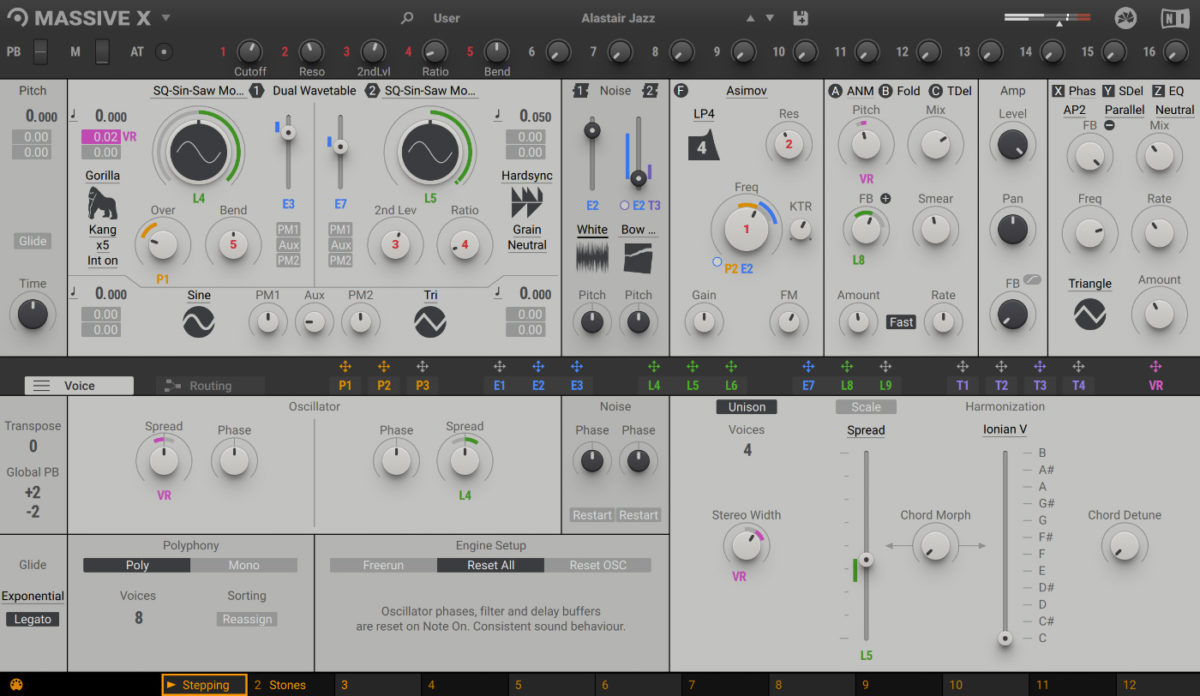
Features for sound creation
MASSIVE X certainly offers depth – there’s a huge amount in there to explore. To help you navigate the options available, we asked the sound design team what aspects of MASSIVE X they found most interesting, and what makes the instrument so special.
Oscillator modes: We’ve covered the oscillators in the previous instalment of Massive X Lab, but all of the sound designers enthused about this section. Richard Devine commented on their organic sound: “I love the new timbre changing features, like the Phase Modulation, the wavetable modes and algorithms (Bend, Mirror, Gorilla, etc.) There are additional options like subtractive filtering, sample and hold, ring modulation, frequency shifting, distortion, and so on.”
Improved Tracker modules: “The enhanced tracker modules (originally KTR FLT and OSC) create new opportunities for expressiveness,” says Carlo. “These allow you to scale incoming MIDI signal data like velocity or note before assigning to a parameter. You can edit them in fine detail, draw in Bezier curves, and quantize the lines to a predefined grid, which opens up new sonic territory.”
The reason this makes MASSIVE X more musical, says Carlo, is because you can map an expressive performance to the sound. Tracker modulations can be assigned to any parameter, so you’re really performing instead of just pressing a button. “For instance, if you use a negative exponential curve ramping up – attached to velocity and assigned to filter cutoff – you can make an instrument which is mostly dampened,” he says. “Only extremely high velocities open the filter, completely letting the high frequencies come through.”
Filters: “I’m a sucker for the Blue Monark filter,” says ARC. “It has a huge warm sound to it, and the load knob really helps to push the tone. The comb filter is great, too, for making more abstract and strange sounds with – it has a real modular synth vibe to it.”
Effects: “I had fun modulating the delay settings to get really wonky, dubby delay effects,” says ARC. “And the different reverb algorithms are great for getting different atmospheres.”
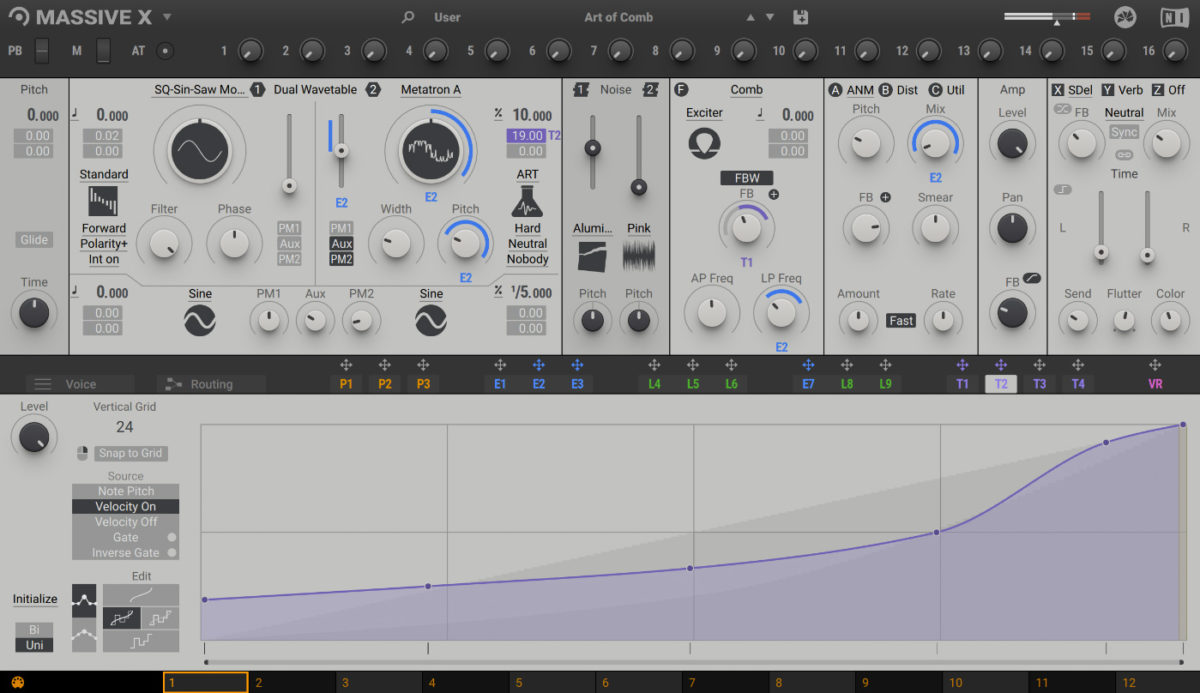
Carlo suggests checking out the new flavors for the overhauled effects – ten different variations to the sound of the Chorus alone.
Modularity: “It’s pretty impressive how simply and efficiently the interface is designed,” says John. “You can assign the plethora of modulators to any parameter you want with just drag and drop.”
“The new routing section is flexible and easy to work with,” says Richard, “because you can just click and drag connections around between the different modules – you can quickly reconfigure things or multiply outputs to different sources. With this new feature alone, you can assign one wavetable oscillator to phase modulate the other, for example. And that’s something you couldn’t do with the original version of Massive.”
“To be able to connect nearly anything to anything is amazing,” says Torsten. “For example, I can send the OSC1 to the filter, OSC2 to the DSP effects, and the noises straight to the output. That makes Massive X special for me,” he says, arguing this is the perfect extension of the easy modularity of the original.
Envelopes and LFOs: One of Richard’s favorite things is the available number of slots for envelope and LFO sections. “We have nine slots, eight that are interchangeable – choose either the modulation envelope, exciter envelope, switcher LFO, and random LFO (which can also be used as an extra noise source). I love building organic rhythms just by using a couple of LFOs that are running in multiple or divisions of time, modulating VCAs, filters, and effects. Things can get super crazy quickly.” And the modulation goes on and on, Richard says: “one LFO into another, then that source goes to another LFO, etc.”
Noise: Don’t miss the two complex noise voices, atop the existing wavetable synth, says Torsten. He recommends trying out the various included noise tables.
Performer section: Several sound designers talked about this section as being a favorite – allowing you to animate sounds in new ways. “I love the way you can add extra movement to the sound by drawing sophisticated sequences and patterns,” says John.
“I was able to create entire multi-part sequence patches using this feature,” says Richard. “Using P1 for example to sequence a kick drum, then P2 for my snare/hi-hats, then P3 to sequence a bassline or synth sound, etc.
“You can route that performance modulation to other destinations,” Richard says, like wavetable scanning or noise pitch, ”so you get these really great timbre changes happening in time.” You can even route that modulation to other LFOs, he says, for “motion happening throughout the patch.” You can also run different Performer lanes at different time signatures for polyrhythms.
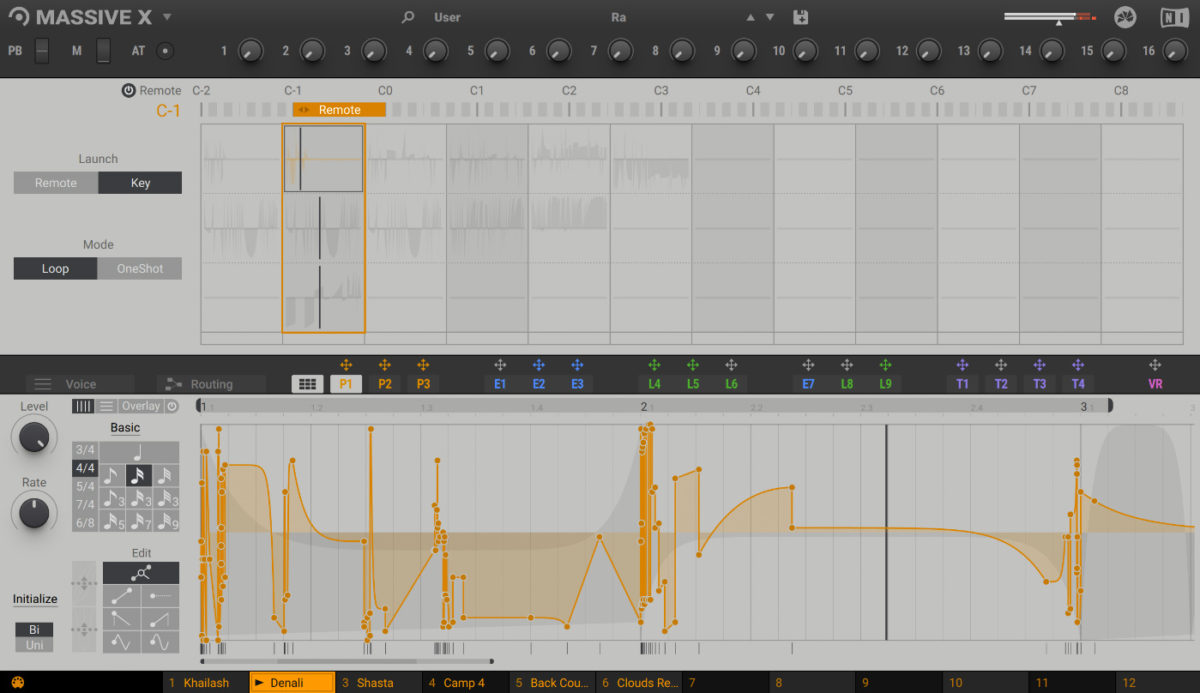
More sound tricks
Bananas? Gorillas?: “This thing is such a monster, you’ll find some specific routing tricks to try.” Carlo suggests feeding the Banana wavetable to the Gorilla play mode, then modulating the bend parameter, for instance.
ARC: “Check out the NonLinearLab cabinet effect for all sorts of tonal shaping, the Random LFO for unpredictability, and the various unison modes for huge unison sounds or a world of different chord voicings – great for stabs and pads!”
Richard: The remote octave function “allows you trigger up to 12 performer snapshots via MIDI or mouse, so you can create longer complex patterns – really cool.”
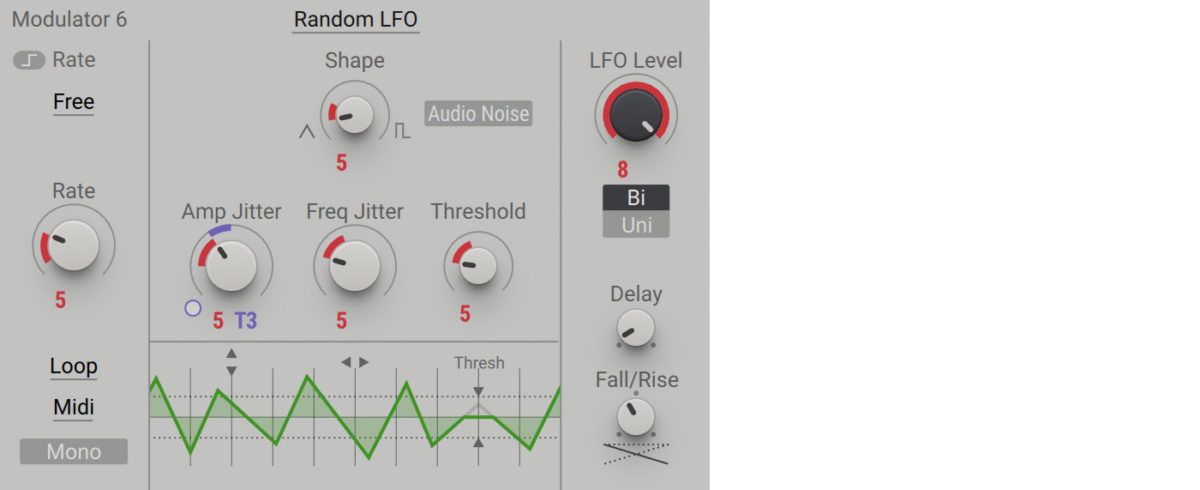
Where MASSIVE X could take you
MASSIVE is best known for signature basses and the genres it inspired, but from the beginning, it was an open-ended tool for all kinds of sound designs. (Carlo points to everything from vaporwave to cinematic scores to neuro-funk bass to psy-trance leads.) MASSIVE X takes that to the next level, say our sound designers.
ARC: The original Massive was famous for those mid-range modulated basses, but really was capable of nearly any type of sound. I see Massive X as being even more flexible – I could see it getting used for ambient music, film scores. The low end on it is really thick sounding and I think it’ll get used for all sorts of huge sub bass sounds too.”
Richard: I feel this is an entirely new beast in terms of workflow and user interaction. It really invites the user to explore more with how you can shape and move the sounds within a patch.
It’s 100 times more fun to work with versus the original Massive. I also feel people will feel more comfortable trying to create their own things, as the GUI is much cleaner and easier to understand.
John: There are no boundaries in terms of creativity. It will be very interesting to see how the new generation of sound designers and producers incorporate it into their work. Being a composer myself, I do know that a great preset can inspire someone to compose a great track. In addition, I believe that Massive X is a cinematic instrument, so it would be great to have my presets used in blockbuster Hollywood movies. Explore, explore, explore… I always try to motivate people to play with their instruments. It’s very important for anyone who produces music, to be able to create their own sounds
Torsten: It was pure fun and joy to work with this synth. May the force be with us.










